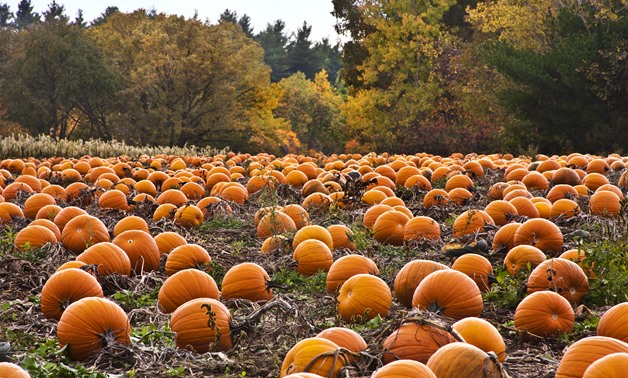
Pumpkin patch - CC via Flickr/PROliz west
CAIRO – 23 August 2018: Alongside a national campaign, Egypt is starting to place importance on planting pumpkin this year in several governorates; Sharqia, Beheira, Dakahlia and Ismailia.
With respect to Egypt’s growing water shortage fears, pumpkin is one of the crops with the least water consumption.
Several seminars were held to explain the ways of cultivating, producing and planting pumpkins for farmers, as per Mohammed Abu El-Nasr, head of the National Campaign for pumpkin cultivation in the North Delta. They also explained that the cost of cultivation is not expensive and that pumpkin can sustain lack of water and high levels of salinity.
The General Director of Agriculture at Beheira, Sameer Al-Hallaj, said that they want to expand the cultivation of pumpkin to a target of at least 1,000 acres in the next year noting that full-fledged plants have been developed to educate farmers about the importance of pumpkin.
Moreover, pumpkin, although grown in many parts of the world, is foreign and untraditional to Egyptians. It has many health benefits to it though, and can be cooked in different ways, both sweet and savory. It contains nutritional importance as it is rich in vitamin B, fiber and other necessary minerals.
Because it is rich in antioxidants, pumpkins can also reduce the risk of certain cancers and provide protection against heart diseases, asthma, obesity, diabetes and help in maintaining healthy hair and skin too.
The best, or rather preferred season for planting pumpkin is from late March to April, so that they would be exposed to an adequate amount of sunlight for proper growth, Hallaj explained. It also takes about five months for a pumpkin to grow and it’s best planted in desert-soil areas; however, any sort of soil would do.
However, as pumpkins come from the cucumber family, a major concern is that cucumber crops can often have fungal and/or viral diseases, sometimes due to pests.
Hence, methods of pest control and other preventive disease measures should be in accordance with recommendations from the Agriculture Ministry, such as moderate irrigation and using better drainage.
Economically speaking, the cost of planting acres covering all stages would be LE 12,000 alongside a total profit of LE 35,000 per acre.
This project also works hand in hand with the goal of developing rather ignored governorates to become more independent in terms of economic gains.
In the long run, a protocol was signed with the Faculty of Pharmacy that they would extract materials from the plant, stressing that pumpkin may be the next most important commodity for Egypt that can eventually be exported to Europe too.
As the demand for food grains becomes high due to the growing population, Egypt has been on the lookout for new foods that are both healthy and can grow in Egypt’s soil and weather.
Aside from pumpkins, the new cultivation of quinoa plants is a more or less a replacement to staples such as rice and other kinds of wheat.
Much like pumpkin, quinoa needs much less water to be cultivated compared to rice and wheat.
Alongside its ease in planting, it possesses extremely healthy components such as protein, zinc and calcium.
Interestingly, for those who often feel bloated after eating bread or other wheat-based products due to gluten, quinoa is gluten-free and can be used as a healthier replacement.

Comments
Leave a Comment